
What started my interest was a challenging bird I found at
my local patch: the individual shown in these first series of
photos (lets call it Bird X) was found in late August 1997 in
Texas, and reported as a possible LIEG largely because of the
gray lores:
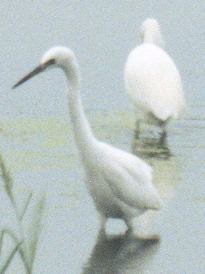
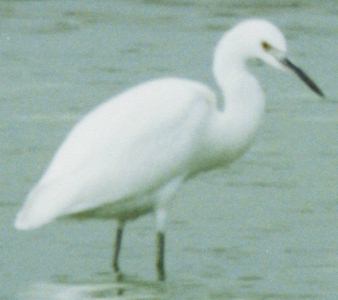
Aging any egret is the key to identifying it, and the modern literature
indicates that the lack of head/back/foreneck plumes, extensive
greenish tone on the rear of the legs and the tinge of yellow-green
to the basal part of the lores make Bird X a juvenile - the toughest
age to identify.
Many people came to see this bird , but there were a couple of
juvenile SNEGs with pale yellowish lores that were being mis-identified
by some people, and thus I can only be sure of the sightings/photos
made in the first two days (all these photos were from this period).
Other things noted about Bird X were:
- it always looked slightly bigger and bulkier than any nearby
SNEGs.
- its legs did not look any thicker, but appeared longer, always
with more exposed leg than SNEGs feeding in the same depth of
water.
- the feathering below the bill extended well beyond that above
the bill, forming a more noticable "step" than on nearby
SNEGs
- it consistently looked "pot-bellied" compared to all
the SNEGs, formed by a bulge in the belly between the legs ( a
bit like that often seen on "tame" overfed ducks)
- it spent a lot of time hunting with its neck fully extended
for long periods (more like a Great Egret) - the SNEGs held this
posture rarely, and for only a few seconds.
Some of these points can be seen in the next group of three photos
(Bird X on the right):

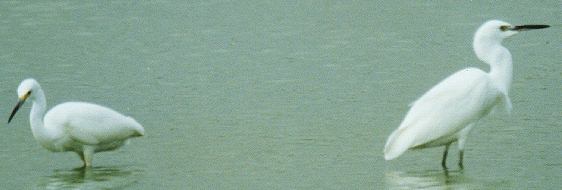

The following two photos of Bird X reveal that it does have some
extended feathers on the crown and foreneck (in the first image
it is threatening a nearby egret), so can juvenile SNEGs have
such feathers?:
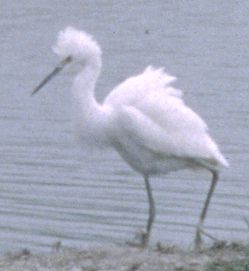
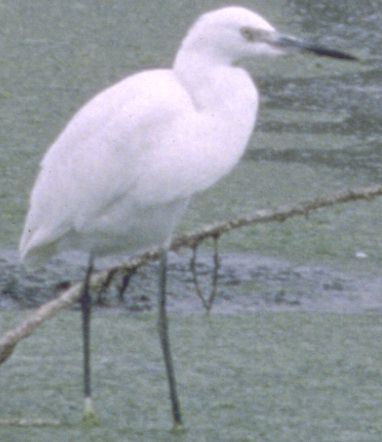
All the images above this point are of Bird X from Fort Worth,
Texas.
For comparison, here are two LIEGs from Israel and Bahrain (both
in March):
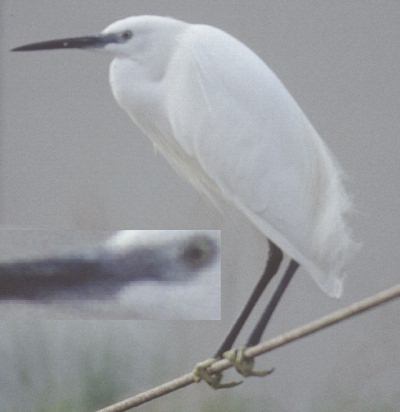
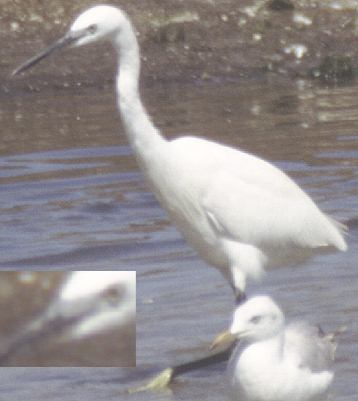
- and here is a juv. LIEG from England, next to an image of the
Bird X (right) reduced to match sizes:
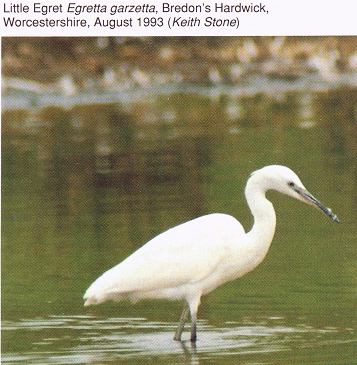
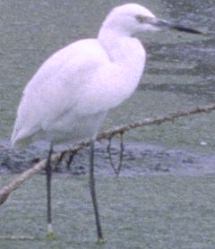
- with thanks to BIRDING WORLD magazine and Keith Stone.
Before passing judgement, please take a look at the
next page of interesting SNEGs (there are lots of images,
so be patient). Bird X was submitted to the TBRC as a Little Egret,
and was not accepted. I now feel that the Bird X was likely to
have been a juv SNEG, and as such it provides a useful benchmark
for anyone trying to identify a juv. egret with gray lores. Just
to really muddy the waters, take a look at this
bird! - I would appreciate getting informed
comment. You can find an excellent article about identifying
LIEG and SNEG in BIRDING WORLD 9: pages 434-444.